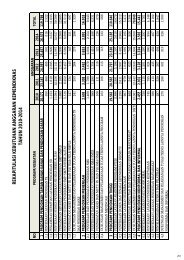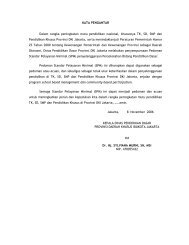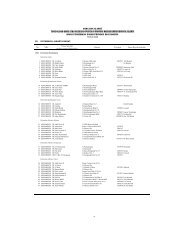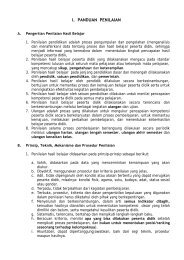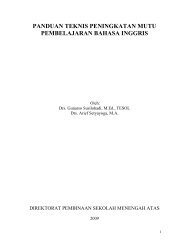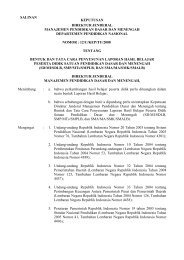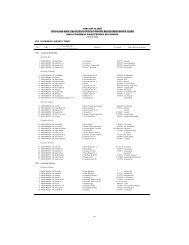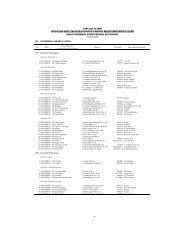The Curriculum - WordPress.com
The Curriculum - WordPress.com
The Curriculum - WordPress.com
You also want an ePaper? Increase the reach of your titles
YUMPU automatically turns print PDFs into web optimized ePapers that Google loves.
<strong>Curriculum</strong> Development, Change and Controlwithin the curriculum. It also led it to adopt a differentiated approach to curriculumplanning. Because the constraints of the examination were less significantin relation to those pupils regarded as ‘less able’ or those whose examinationtargets were within the newly established Certificate of Secondary Education(CSE), where examination requirements, and even subject content, were morereadily malleable, it could be claimed that it was at its most influential in re<strong>com</strong>mendingchanges in the curriculum for the ‘less able’ pupil in the secondaryschool. Indeed, a major part of its brief was to advise on a suitable curriculum forthe early leaver, the school leaving age having been raised to 16+, with effectfrom 1972, on the advice of the Newsom Committee (CACE, 1963). It must alsobe recognized, however, that its influence here often took the form of advisingschools to offer such pupils a different curriculum, consisting largely of low-statusknowledge and little else (Kelly, 1980a). This is a point we will return to whenwe discuss the issue of curriculum entitlement in Chapter 8.Planning by objectivesA third aspect of the work of the Schools Council from which many lessonshave been learnt was the encouragement it offered to most of its early projectsto adopt an objectives-based planning model. Again it must be conceded thatthis was understandable in the context of the general climate existing at thetime when it was established. Whatever the reasons, however, it is clear thatfrom the beginning the Council was not only concerned that, in order todemonstrate its proper use of public funds, the work of all its projects shouldbe evaluated, but inclined also to the view that this could best be done, perhapscould only be done, if they began by making clear statements of their objectives.<strong>The</strong>re were, of course, notable exceptions to this general trend, among which,as we saw in Chapter 3, was the Humanities <strong>Curriculum</strong> Project (SchoolsCouncil, 1970), but these exceptions merely prove the rule and there is nodoubt that as a whole the Schools Council added its weight to that growingtrend towards regarding this as the only proper basis for curriculum planning,a trend which we have noted, vigorously questioned and, indeed, rejected inearlier chapters. <strong>The</strong> link between the prespecification of objectives and curriculumevaluation we will explore more fully in Chapter 6; we must merelynote here that the Schools Council can be criticized for lending its generalsupport, at least in its early years, to the view that this link is non-problematic,although this must be offset by a recognition of what some of its projectscontributed to the opening up of this issue.DisseminationLastly, we must note that further lessons were learnt from the methods of disseminationadopted by many of the Schools Council’s projects. Again, we will look atthe problems of the dissemination of curriculum innovation later in this chapter.We must <strong>com</strong>ment here, however, that on the evidence of its own Impact and105




